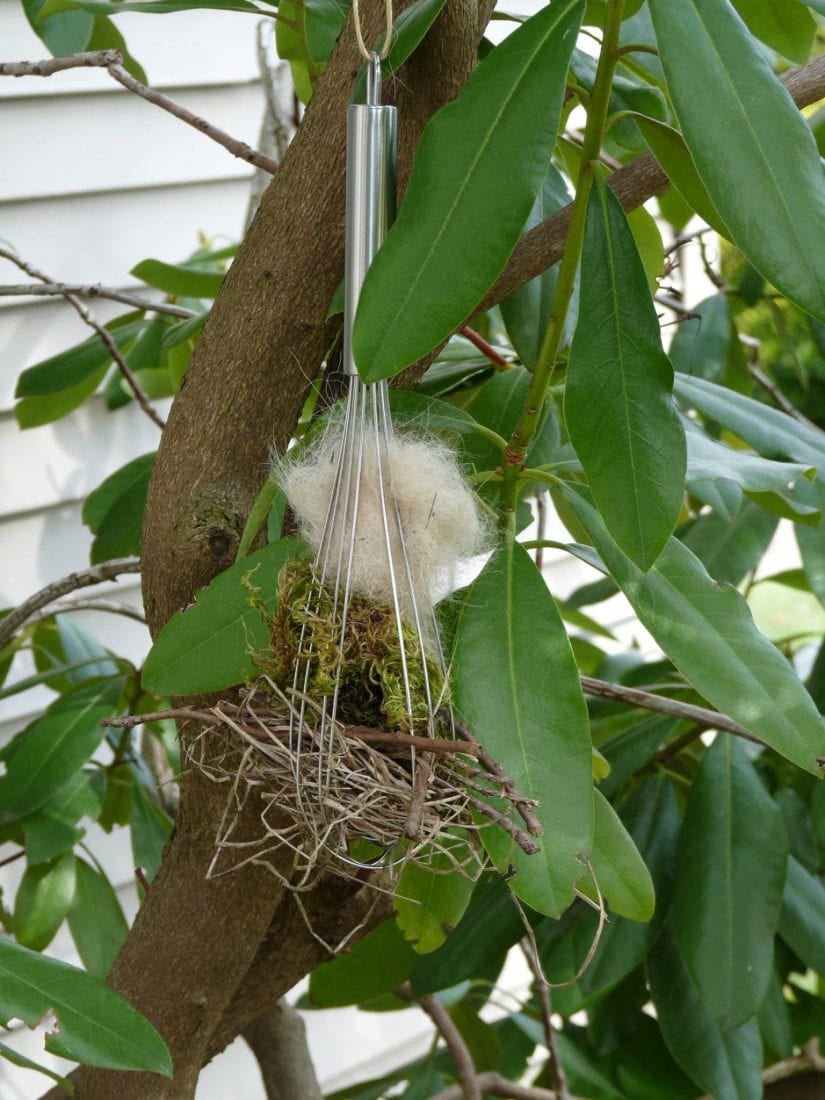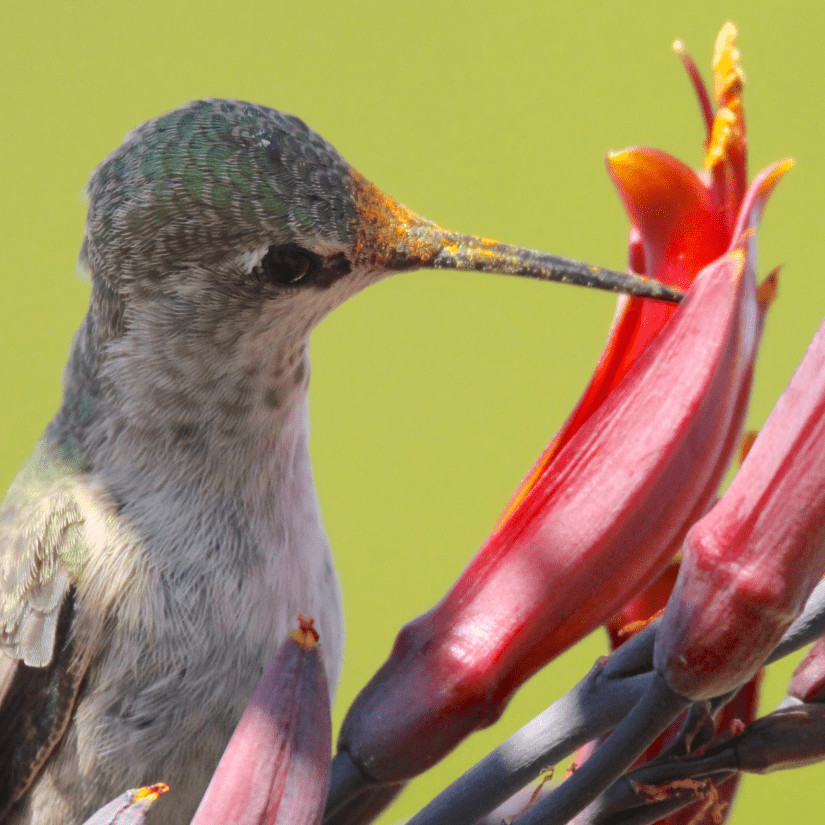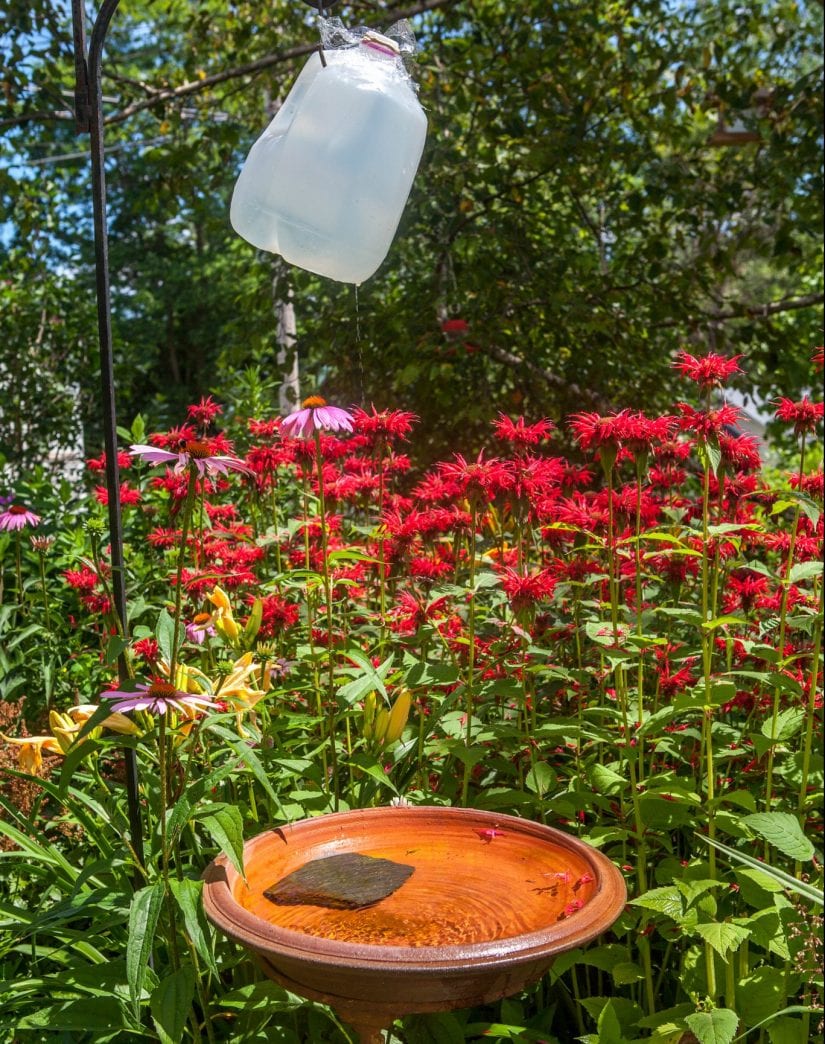Do you want to attract birds to your backyard or patio? The trick is to provide the essentials that support their existence. Like us, birds need three basic things to survive: food, water and shelter. You can help provide all three – right in your own backyard.

1. Shelter shortcuts
Throwing shade, or growing shade?
Unlike people, birds can’t sweat to cool down – but they do have other ways to keep cool. Birds may pant (to help dissipate heat), puff up their feathers, flutter their wings, take a splash, or simply seek shade.
During the hottest months of the year, you can help birds beat the heat by turning your yard into a shade haven. Native trees and shrubs with dense branches provide the best shade, and can be layered with other native plants for layers of shelter. Longer grass, vines, and dense groundcover can also help make cool spots. Plants that provide natural food and shade are a bonus!
In a pinch, you can also put out wide garden umbrellas with a sturdy base. Place these in the greenest corners of your yard, where birds are mostly likely to visit. Growing a shade haven may take a while, but it will pay off in the long run for the birds (and bird watchers).
Make a nest helper
Spring is baby bird season! Everywhere you look, birds are hard at work gathering materials to build a nest. Why not make their lives a little easier with a “nest helper”?

A simple nest helper can be made from stuffing a kitchen whisk with an assortment of nesting materials. While you are out on a walk, try collecting:
- mosses and lichens
- dead twigs
- bark strips
- pine needles
- dead leaves
- dry grass (untreated)
- plant fluff or down (from cottonwoods and bulrushes, for example)
At home, you can also gather:
- sprigs of herbs or shrubs (untreated)
- hay
- straw
- leaf mulch
- crafting feathers (not dyed)
Once the whisk is filled, hang it from a tree or mount it on a fence. If you want, use several whisks, filling each one with a different nesting material. Then see which one the birds prefer!
Keep the nest helper filled through summer too, as some birds nest late and others nest more than once during the season.
2. Food for thought
Try choosing plants for your garden with birds in mind. You can attract birds with native plants like these that have seeds, berries or nectar for them to eat:
- mock orange (seeds)
- large-leaved lupine (seeds and nectar)
- red-flowering currant (berries and nectar)
- orange honeysuckle (berries and nectar)
- red columbine (seeds and nectar)
- VanDusen Botanical Garden backyard bird garden plant list (PDF)
Gardens with a variety of plants also attract insects — and the birds who feed on them.

3. Water, water, anywhere?
With a bird bath, you are bound to get all sorts of visitors. The best baths are those that mimic shallow puddles (which are basically nature’s bird baths).
Want to up your bird bath game? Add a water dripper! Birds will be attracted to the sound and movement of the water.
All you will need is a plastic milk jug. Poke a tiny hole in the bottom and hang it above your bird bath so that it drips slowly down into the bath throughout the day. Be sure to unscrew the lid a little. Releasing some air this way will keep the jug from collapsing in on itself. Refill the dripper every day or two.
Well-maintained bird baths and running water sources are considered relatively low-risk for spreading diseases. Water sources must be emptied, cleaned, and refilled regularly. If you see any signs of sick birds in your yard, empty the water sources and discontinue use immediately.

Backyard bird safety
Remember that our feathered friends rely on you to keep your backyards safe for visits. You can help by:
- Keeping cats indoors, or safe in catios
- Making sure bird baths and bird feeders are cleaned regularly
- Doing a window check, and making your windows safer for birds
Subscribe to WildSense Newsletter
Want to receive more stories like this, right in your inbox? Subscribe to WildSense, our bi-monthly wildlife newsletter.
